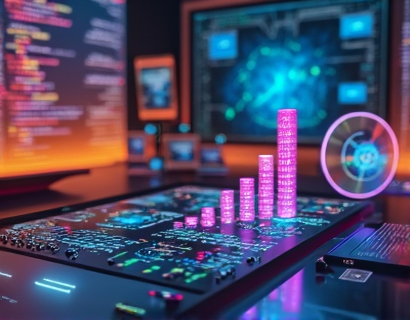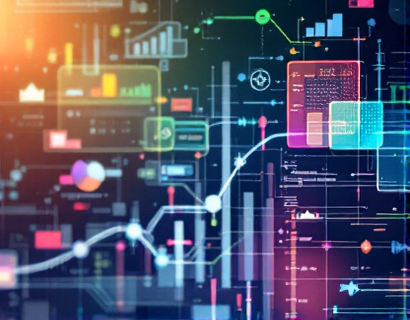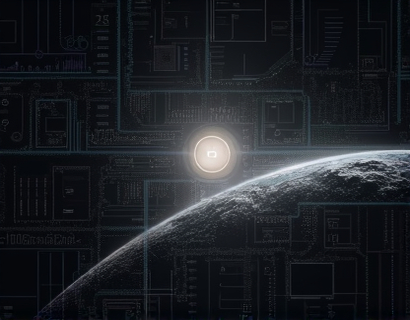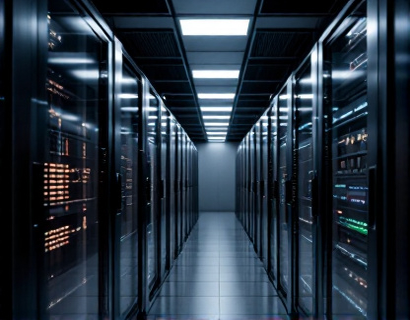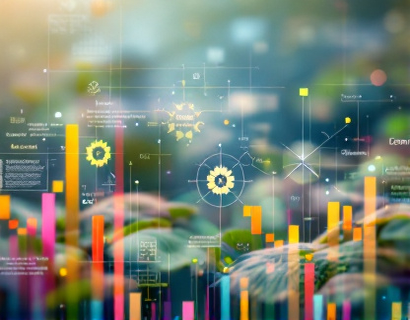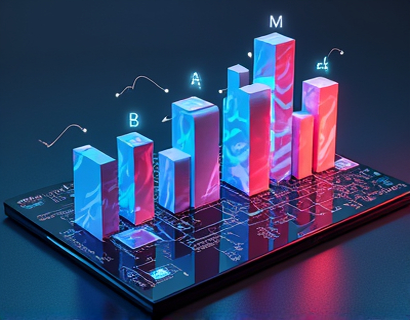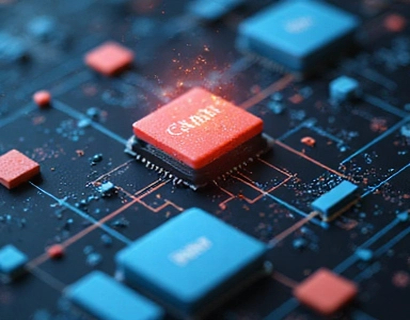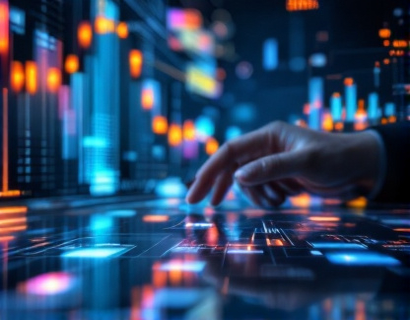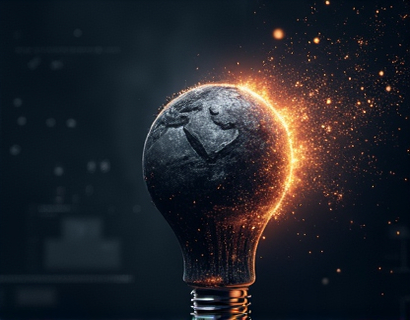Decentralized Productivity Revolution: Harnessing AI and Crypto for Next-Gen App Ecosystem
The digital landscape is undergoing a profound transformation, driven by the convergence of artificial intelligence (AI) and decentralized technologies. This revolution is not just about incremental improvements but a fundamental shift in how we approach productivity, collaboration, and task management. By merging the power of AI and cryptocurrency, we can unlock a new era of app ecosystems that are more efficient, secure, and user-centric. This article delves into the transformative impact of decentralized technology, exploring how advanced tools can enhance user experience and redefine workflows in the modern landscape.
Understanding Decentralized Technology
Decentralized technology, often associated with blockchain, represents a paradigm shift from centralized systems to distributed networks. In a decentralized system, no single entity has control over the entire network. Instead, data and processes are spread across multiple nodes, ensuring transparency, security, and resilience. This decentralization is crucial for building trust and reliability in digital interactions, especially in an era where data privacy and security are paramount.
Blockchain, the foundational technology behind cryptocurrencies, provides a tamper-proof ledger for recording transactions. However, its applications extend far beyond finance. In the context of app ecosystems, blockchain can ensure that data is immutable and accessible only to authorized users, reducing the risk of data breaches and unauthorized access. This level of security is essential for applications that handle sensitive information, such as health records, financial data, and personal identifiers.
AI in Decentralized App Ecosystems
Artificial intelligence complements decentralized technology by bringing intelligence and automation to the forefront. AI algorithms can analyze vast amounts of data, identify patterns, and make predictions, all of which can be leveraged to enhance the functionality of decentralized apps. For instance, AI can optimize resource allocation, improve user interfaces, and provide personalized experiences based on user behavior and preferences.
In a decentralized app ecosystem, AI can facilitate smart contract execution, ensuring that agreements are enforced automatically and transparently. Smart contracts, self-executing contracts with the terms directly written into code, can reduce the need for intermediaries and lower transaction costs. When combined with AI, these contracts can adapt to changing conditions and make real-time decisions, further enhancing efficiency and reliability.
Enhanced User Experience through AI and Decentralization
The integration of AI and decentralized technologies can significantly enhance user experience. One of the key benefits is the creation of more intuitive and responsive applications. AI-driven interfaces can learn from user interactions, adapting to individual needs and preferences over time. This personalization not only makes applications more user-friendly but also increases user engagement and satisfaction.
Decentralization adds another layer of value by ensuring that user data remains under the control of the user. With traditional centralized systems, users often have to trust third-party platforms with their data, which can lead to privacy concerns. In a decentralized ecosystem, users can manage their data directly, choosing who has access and under what conditions. This empowerment fosters a sense of ownership and trust, which is crucial for widespread adoption.
Streamlining Workflows with Decentralized Tools
Decentralized app ecosystems can revolutionize workflows by breaking down silos and enabling seamless collaboration across different platforms and services. Traditional workflows often involve multiple centralized systems, each with its own protocols and data formats, leading to inefficiencies and friction. Decentralized tools can bridge these gaps by providing a unified, interoperable framework.
For example, in a decentralized project management tool, tasks can be assigned, tracked, and completed without the need for a central server. Each participant in the project can access and update the status of tasks in real-time, with all changes recorded on a blockchain. This transparency ensures accountability and reduces the risk of miscommunication or data loss.
Moreover, decentralized tools can integrate with various AI-powered services to automate repetitive tasks. For instance, AI can handle data entry, schedule meetings, and even provide insights based on project data. This automation not only saves time but also reduces the potential for human error, leading to more accurate and efficient workflows.
Security and Trust in Decentralized App Ecosystems
Security is a critical factor in the adoption of any technology, and decentralized app ecosystems offer robust security features. The decentralized nature of these systems means that there is no single point of failure. Even if one node is compromised, the overall network remains secure. Additionally, the use of cryptographic techniques ensures that data is encrypted and can only be accessed by authorized parties.
Trust is another significant advantage. In a decentralized system, users can verify the integrity of data and the execution of smart contracts through public ledgers. This transparency builds trust among users and reduces the need for intermediaries, which can be both costly and unreliable. For businesses and individuals alike, this level of trust is invaluable in fostering long-term relationships and collaborations.
Economic Incentives and Tokenization
Cryptocurrency and tokenization play a pivotal role in incentivizing participation and rewarding contributors in decentralized app ecosystems. Tokens can be used to represent value, facilitate transactions, and reward users for their contributions. For instance, in a decentralized content creation platform, creators can receive tokens for producing high-quality content, while users can earn tokens for engaging with and sharing that content.
These tokens can also serve as a means of governance, allowing token holders to vote on proposals and shape the direction of the platform. This decentralized governance model ensures that the community has a say in the development and management of the ecosystem, fostering a more democratic and inclusive environment.
Challenges and Considerations
While the potential of decentralized app ecosystems powered by AI and cryptocurrency is immense, there are several challenges that need to be addressed. Scalability remains a significant issue, as many blockchain networks struggle to handle a high volume of transactions efficiently. However, ongoing developments in blockchain technology, such as layer 2 solutions and sharding, are aimed at addressing these scalability concerns.
Another challenge is the regulatory landscape. As decentralized technologies evolve, governments and regulatory bodies are beginning to take notice. Navigating this complex regulatory environment is crucial for the sustainable growth of decentralized app ecosystems. It is essential for developers and businesses to stay informed and comply with relevant regulations to avoid legal issues.
Education and user adoption are also critical. Many users are still unfamiliar with decentralized technologies and blockchain. Providing educational resources and user-friendly interfaces can help bridge this knowledge gap and encourage broader adoption. Community building and support are vital in fostering a culture of innovation and collaboration.
Future Prospects
The future of decentralized app ecosystems is bright, with numerous opportunities for growth and innovation. As AI continues to advance, we can expect even more sophisticated tools that enhance the capabilities of decentralized applications. The integration of AI with blockchain can lead to smarter, more autonomous systems that can adapt to changing environments and user needs.
Moreover, the convergence of decentralized technologies with other emerging trends, such as the Internet of Things (IoT) and 5G networks, opens up new possibilities. Decentralized IoT networks can enable more secure and efficient communication between devices, while 5G can provide the necessary bandwidth for real-time data processing and transmission.
In conclusion, the decentralized productivity revolution, driven by AI and cryptocurrency, is poised to transform the way we work and collaborate. By leveraging the strengths of decentralized technology and AI, we can create app ecosystems that are more secure, efficient, and user-centric. As we navigate the challenges and embrace the opportunities, the potential for a more decentralized and innovative digital future becomes increasingly tangible.




